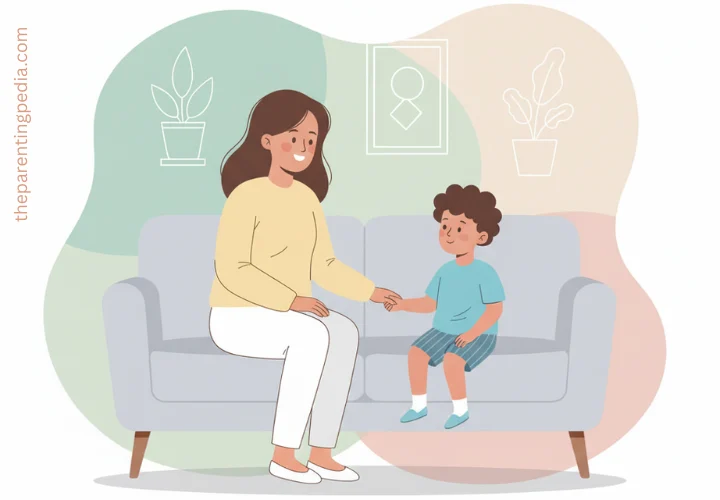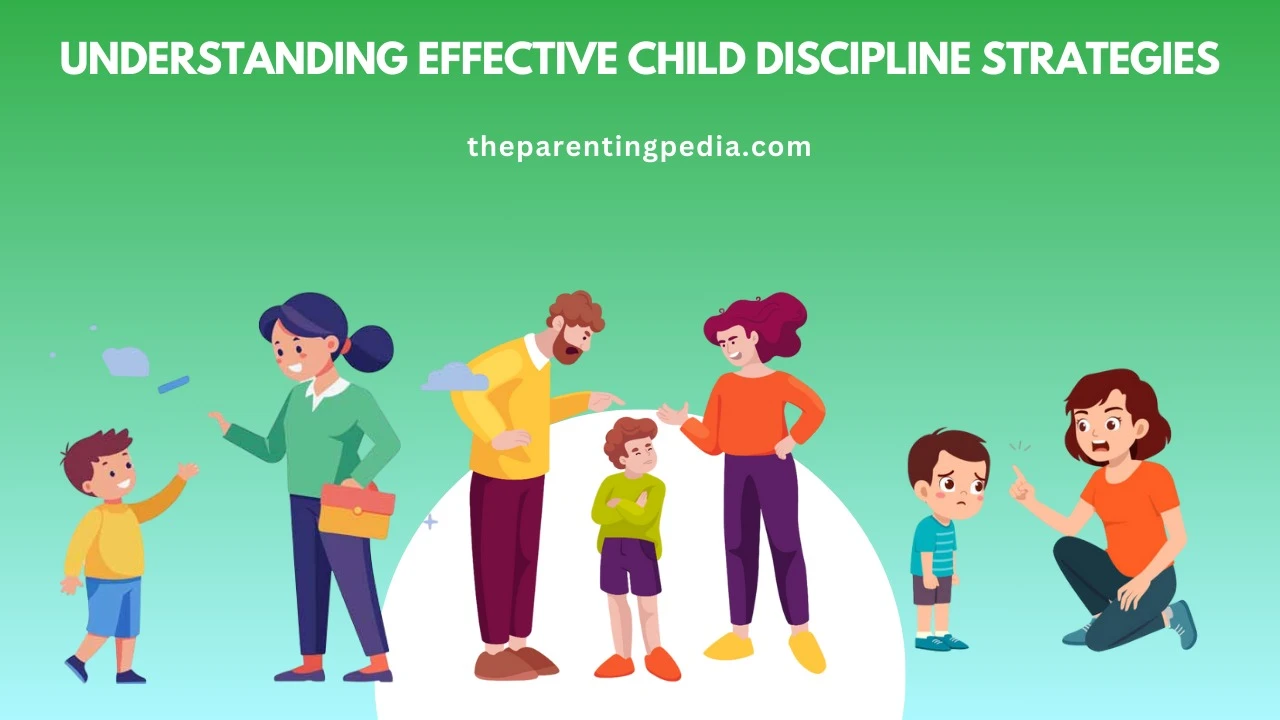Parenting is one of the most rewarding yet challenging roles in life. Among the many responsibilities parents face, teaching children discipline stands out as one of the most important. Discipline is not about punishment, it is about guidance. Effective child discipline strategies help children understand boundaries, develop self-control and learn how to make positive choices. By using the right approaches, parents can raise confident, respectful, and emotionally healthy children.
What Discipline Really Means?
For many people, the word “discipline” can bring up images of strict rules or punishment. But in reality, discipline comes from the word “disciple,” which means “to teach.” Effective discipline is about teaching children the difference between right and wrong while also helping them grow into responsible individuals. When parents see discipline as teaching rather than punishing, it changes the way they guide their children’s behavior.

Why Effective Child Discipline Strategies Matter?
Discipline is not just about correcting bad behavior, it lays the foundation for a child’s future. Through consistent discipline, children learn:
- Self-control – understanding how to manage impulses and emotions.
- Respect – valuing rules, authority and other people.
- Responsibility – being accountable for their actions and decisions.
- Problem-solving skills – learning to think through consequences and choose better options.
When parents use effective child discipline strategies, they help their children build character, resilience and emotional strength.
The Difference Between Discipline and Punishment
It is important for parents to recognize the difference between discipline and punishment. Punishment often focuses on making a child “pay” for a mistake, usually through fear or consequences that don’t teach much. Discipline focuses on teaching, guiding and encouraging better behavior in the future.
For example, if a child refuses to clean up toys, punishment might involve yelling or taking away privileges immediately. Effective child discipline strategies however might involve calmly explaining why cleaning up is important and guiding the child to do it, perhaps with the parent’s help at first. This difference matters because while punishment may stop a behavior in the short term, it doesn’t always teach children the skills they need to make better choices.
“Snap it, link it, share it! 🚀 Super easy & 100% free. Start sharing smarter today
Principles of Effective Child Discipline Strategies
Before looking at specific methods and child discipline strategies, parents should remember a few basic principles:
- Consistency is key – Rules and consequences should be applied regularly so children know what to expect.
- Stay calm – Discipline is most effective when delivered in a calm, respectful manner.
- Focus on teaching, not shaming – The goal is to correct behavior, not to make the child feel bad about themselves.
- Be age-appropriate – Strategies should fit a child’s age, understanding and developmental stage.
- Balance love and limits – Children need both warmth and boundaries to grow and develop.

Effective Child Discipline Strategies
1. Setting Clear Expectations
Children feel more secure when they know what is expected of them. Parents should set clear, simple rules that are easy to understand. For example, “We use gentle hands” or “We pick up our toys before bedtime.” Repeating and reinforcing these expectations consistently helps children remember and follow them.
2. Positive Reinforcement
One of the most powerful child discipline strategies is rewarding good behavior. When parents notice and praise their child for doing something right, children are more likely to repeat it. Praise can be as simple as saying, “I like how you shared with your sister” or giving a high-five. Small rewards, like extra playtime can also motivate children.
3. Natural and Logical Consequences
Instead of punishment, parents can allow natural or logical consequences to teach lessons. For example, if a child forgets their homework, the natural consequence is facing the teacher’s reaction. A logical consequence on the other hand should be directly related to the behavior. If a child throws food, a logical consequence might be ending mealtime early. This way children learn responsibility without harshness.
💡 Do Simple Stuff. Get Cool Rewards. Click to Claim!
4. Time-Outs as a Calm Down Tool
Time-outs are often misunderstood. The purpose is not to isolate or shame a child but to give them space to calm down and reflect. A short time-out in a quiet place can help children regulate their emotions before returning to try again. It is important that parents explain why the time-out is happening and discuss better choices afterward.
5. Redirecting Behavior
Younger children in particular benefit from redirection. Instead of scolding, parents can guide them toward a more positive activity. For example, if a toddler is throwing blocks, a parent might say, “Blocks are for building. Let’s stack them together” and show them how. Redirection teaches without increasing conflict.
Also Read: Understanding Screen Time Recommendations for Children
6. Modeling Good Behavior
Children often learn more from what parents do than from what they say. If parents stay calm during stressful situations, handle conflicts respectfully and use polite language, children are likely to imitate those behaviors. Modeling is one of the most natural and effective child discipline strategies.
7. Giving Choices
Children crave a sense of control. Offering limited choices can reduce power struggles and teach decision making. For example “Do you want to brush your teeth before or after putting on pajamas?” Giving choices shows respect while keeping boundaries intact.
8. Active Listening and Communication
Sometimes misbehavior happens because children don’t feel heard. Parents can prevent frustration by practicing active listening by making eye contact, acknowledging feelings and responding with empathy. For example, saying “I understand you are upset because you wanted more playtime.” helps children feel validated even if the rule still stands.
9. Consistent Routines
Children like predictability. Routines for meals, homework and bedtime reduce conflicts because children know what to expect. When daily life feels consistent, discipline becomes easier to maintain. Consistent routine is one of the effective child discipline strategies.
10. Staying Calm and Patient
Perhaps one of the most important child discipline strategies is for parents to manage their own emotions. Yelling or reacting harshly often escalates situations, while calm, firm responses build trust and respect. Parents who show patience teach children the value of self-control.
🌐 “Your images deserve a link — create one now at Imagelink.online”
The Long Term Benefits of Effective Discipline Strategies
When parents use effective child discipline strategies, they are investing in their children’s future. Positive discipline helps children build stronger self-esteem and confidence, develop better social skills and respect for others, improve problem-solving and decision-making abilities. It also help form closer, healthier parent-child relationships. Child discipline strategies also creates a lifelong sense of responsibility and resilience in children. Children raised with such guidance are more likely to handle challenges in healthy ways, maintain strong relationships and succeed in different areas of life.
Conclusion
Understanding effective child discipline strategies is about much more than correcting misbehavior. Child discipline strategies are about teaching children the values, skills and habits they need to grow into capable and responsible adults. Discipline done with love, patience and consistency helps children learn that mistakes are opportunities for growth. Parents who combine clear rules with empathy, structure with flexibility and firmness with love create a home where children feel both safe and guided. Over time, these efforts lead not only to better behavior but also to stronger family bonds. Discipline when understood and practiced positively becomes less about control and more about connection. It is one of the greatest gifts parents can give their children.

FAQ
What are effective discipline strategies?
Effective discipline strategies focus on teaching rather than punishing. Parents can set clear rules, use consistent consequences and reward positive behavior. Encouraging open communication, modeling respect and giving age-appropriate responsibilities to child also help. These approaches guide children toward self-control, responsibility and resilience while maintaining a positive parent-child relationship.
How to discipline your child effectively?
To discipline a child effectively, parents should set clear rules, stay consistent and explain the reasons behind expectations. Use positive reinforcement for good behavior, allow logical consequences and model calm, respectful behavior in front of children. Encourage communication, listen to the child’s feelings and adjust strategies based on age and development for lasting results.
What are the three main rules of discipline?
The Three Main Rules of Discipline are a follows:
(1) Obey orders in all your actions.
(2) Do not take a single needle or piece of thread from masses.
(3) Turn in everything captured.
What is the golden rule of discipline?
Most of us know the golden rule: Do unto others as you would have them do unto you. That foundation definitely applies to child discipline. The best part is that using the golden rule doesn’t lessen the effectiveness of the discipline, but it does strengthen your relationship with your child.
Kickstart your journey with this practical guide to profitable business ideas.
